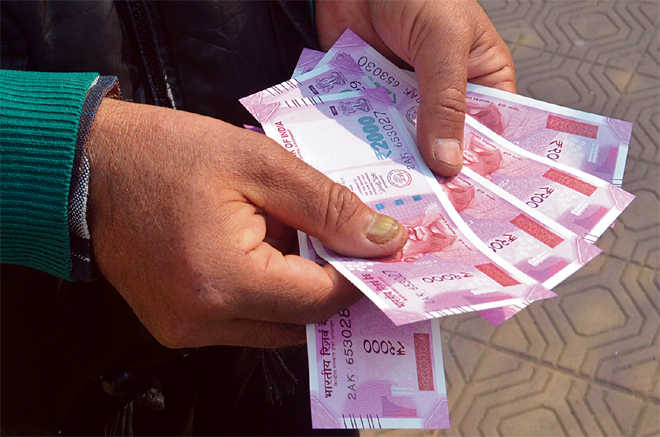The travails of the rupee’s never-ending fall
N Chandra Mohan
Economics and business commentator
The rupee’s sharp fall against the US dollar – although not as much as Turkey’s lira or Argentina’s peso among other emerging market currencies – raises questions as to whether it is good or bad for the Indian economy. Those who welcome a weaker rupee are exporters as a depreciating exchange rate improves their competitiveness in selling their merchandise abroad. Those who would complain include Indian travelers who now need to exchange more rupees to acquire dollars for their expenses abroad. So, too, will students who plan to study overseas as their loan expenses will be more in rupees.
A cheaper rupee is also bad news for the oil import-dependent Indian economy. With global crude prices likely to remain at elevated levels, thanks to geopolitical tensions in West Asia, the country’s import bill is likely to balloon further, besides contributing to higher inflation. Every increase in global oil prices raises the broadest measure of the country’s trade imbalance or the current account deficit. Last year, this deficit touched $48.7 billion or 1.9 per cent of the nation’s output of goods and services or GDP. If higher oil prices are in prospect, the current account deficit will widen.
The rupee is under tremendous pressure as India’s burgeoning imports have to be paid in dollars. This should not be a problem if our export earnings are growing. Unfortunately, they are not. As if all of this weren’t bad enough, foreign investors are pulling out from emerging markets like India, thanks to prospects of higher interest rates in the world’s most powerful economy, the US. With foreign portfolio investors making net sales mostly from India’s debt market since April, the exchange rate of the rupee is testing record lows of Rs 69 to a US dollar.
What can India’s policymakers do about the rupee?
The RBI, for its part, maintains that the central bank doesn’t target any particular exchange rate of the rupee although it can and does intervene if there are sharp movements in its value as during the so-called “taper tantrum” when it registered a low of Rs 68.8 to a dollar in August, 2013. It then scrambled to build up foreign exchange reserves through NRI deposits to defend the rupee. To be sure, the country has enough foreign exchange reserves at present to do the same, with the RBI even selling some dollars to shore up the Indian currency unit.
This limited intervention so far has a lot to do with the ‘trilemma’ of policy making. According to international finance theory, if policymakers want to keep the Indian economy open to international flows of capital, use monetary policy to stabilise the economy and maintain stability in the exchange rate, only two of these three objectives can be satisfied. A liberalised economy remains open to foreign investors since the reforms of the 1990s, while the RBI seeks a more independent monetary policy to check inflation and boost economic growth. Exchange rate stability has to be given up.
Simply put, to attract or stem international inflows and outflows of capital cannot be the policy focus of the RBI. Instead, it has more national objectives in mind to anchor inflationary expectations. Towards this end, it modestly raised its key policy rate for the first time in four years. If it resorted to much steeper rate hikes to check the outflows of portfolio investments in the debt market, for instance, that would snuff out the nascent recovery in the India growth story. It has, however, liberalised debt market investment norms. The rupee finding its own level is the natural consequence of this trilemma.
The upshot is that the weakness of the Indian rupee is likely to persist, if not intensify, as this is occurring against the backdrop of the dollar entering a phase of strength, given the prospects of US growth and hike in interest rates by the US Fed. Although Indian exporters may be relieved, a lower rupee may not be the panacea for their woes. To grow, our exports need to diversify in the direction of greater value addition and superior quality. So long as exporters lower costs and upgrade quality, they will be able to sell more abroad and help in reducing India’s growing current account deficit.
How China maintains control over exchange rate of yuan
Our more powerful neighbour, China, seeks to maintain tighter control over the exchange rate of the yuan and conduct an independent monetary policy. To realise these goals, it necessarily has had to clamp down on capital inflows and outflows from the economy. Of late, it has instituted much sharper restrictions on investment outflows by some big Chinese companies to make overseas acquisitions. For such reasons, it is able to exert relatively greater stability over the exchange rate of the yuan at a time when almost all emerging market currencies are sliding vis-a-vis the US dollar.









